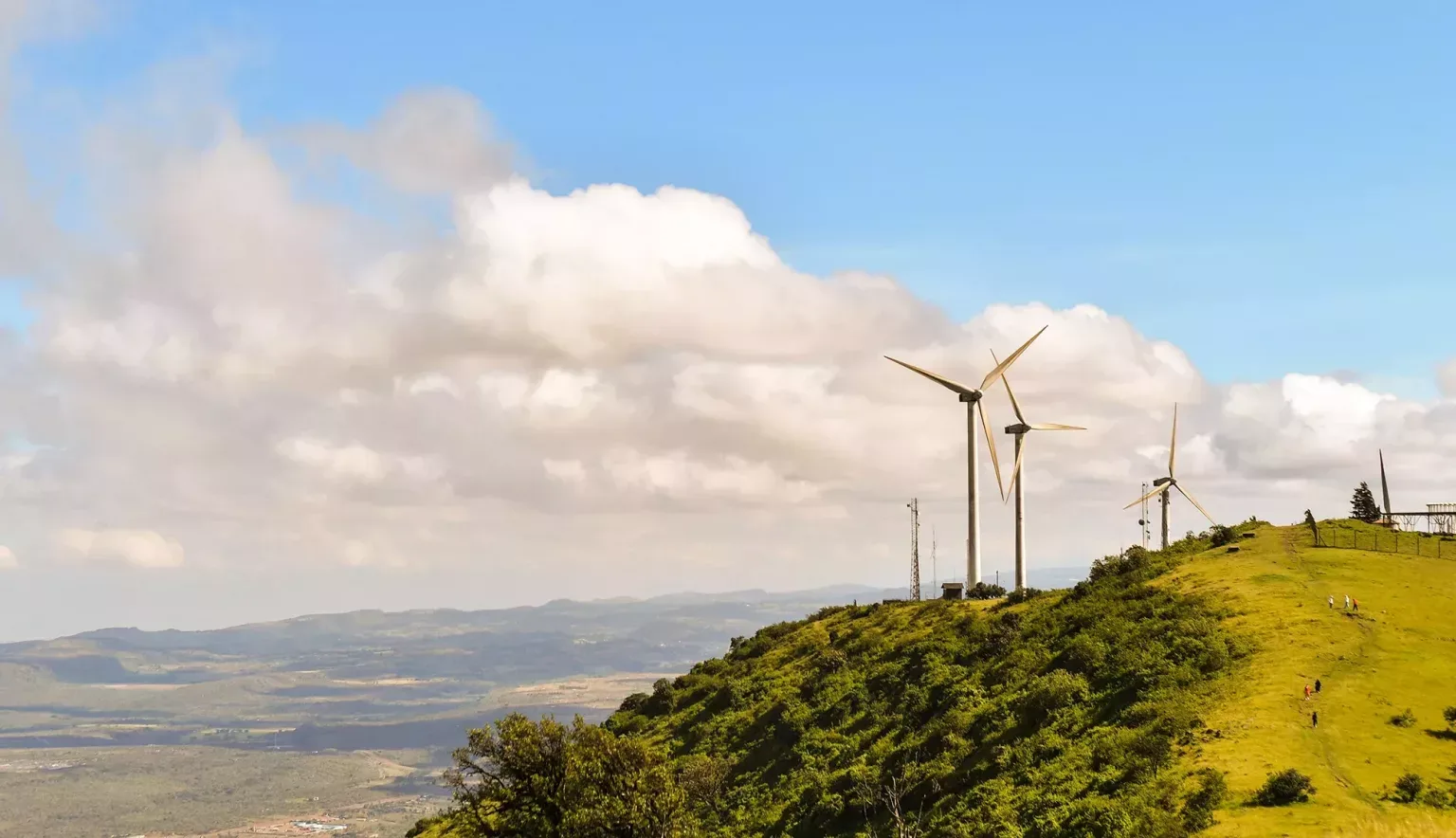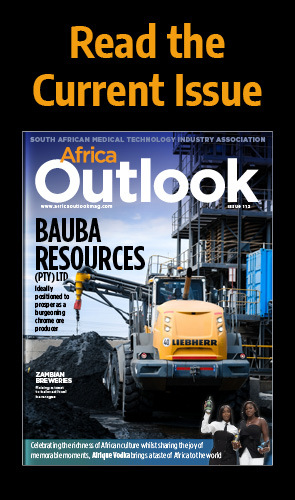Access to clean and affordable energy is expanding in Kenya. We explore the significant role of renewables in the country’s diverse power generation mix.
INTRODUCTION
Renewable energy, coupled with technological innovation, is changing the way that energy is produced, distributed and consumed.
In Kenya, renewable energy currently accounts for 73 percent of installed power generation capacity, whilst 90 percent of electricity used in the East African country is generated by green energy sources such as geothermal, wind, solar and hydroelectric.
Speaking at the 2021 United Nations Climate Change Conference (COP26), the President of Kenya, Uhuru Kenyatta, told the international community that Kenya is determined and on course to achieve a full transition to clean energy by 2030.
As the energy sector accounts for three-quarters of global greenhouse gas (GHG) emissions, innovative new low-carbon energy solutions are critical to both reducing GHGs and ensuring that people have access to clean renewables.
Significant progress has been made by Kenya in the advancement of affordable, green energy, having increased access to electricity from below 30 percent in 2013 to in excess of 75 percent in 2020.
Despite making significant strides in the development of renewable energy, however, around a quarter of the Kenyan population is still without access to electricity, necessitating policy changes to diversify the energy generation mix and the promotion of public-private partnerships to finance renewable energy projects.
Kenya’s flagship installation, the Lake Turkana Wind Power (LTWP) Project, is the largest public-private investment in the country’s history at a cost of €625 million, and is the biggest wind power plant in sub-Saharan Africa. Comprising 365 wind turbines, each with a capacity of 850 kW and a high-voltage substation, LTWP supplies renewable energy to the Kenyan national grid, and is committed to the sustainable application of all resources to the benefit of the environment.
The electricity generated by LTWP has reduced Kenya’s reliance on fuel imports from neighbouring countries, saving more than €281 million between 2018 and 2011, and enabled the continued economic growth of the country in the process.
The development of new and renewable sources of energy is one of the key projects of Kenya Vision 2030, to transform the nation into a newly industrialising, middle-income country and provide a high quality of life to all citizens in a clean and secure environment. To increase access to electricity in rural areas of Kenya, the Energy Access Scale-up Programme will connect one million households with electricity over the next five years.
Meanwhile, Kenya is steadily exploiting the potential of geothermal energy, as the eighth largest geothermal power producer in the world and the largest in Africa. Exploration of geothermal resources in the Great Rift Valley, part of an intra-continental ridge system that runs through Kenya from north to south, first commenced in the 1950s.
The region of Olkaria was later identified as the best candidate for exploratory drilling. Olkaria lies within the Naivasha sub-basin, known for its hot springs, grounds and fumaroles, and is home to the Olkaria I Geothermal Power Station, the first geothermal power plant to be built in Africa.
Using today’s technology, the Great Rift Valley has an estimated geothermal potential of 15,000 MW; nearly half of Kenya’s energy is derived from geothermal plants, however the high costs and risks associated with field development pose significant barriers for private sector backing.
To achieve the renewable energy goals set out in Kenya Vision 2030, the Kenyan government has also launched several solar energy projects, of which the Garissa Solar Power Plant (GSPP) has significantly reduced energy costs and become the largest solar power plant in East and Central Africa.
Through GSPP, Kenya has for the first time developed a major solar power plant to harness its abundance of solar energy resources, diversify the power generation mix, and reduce energy costs, thereby promoting the development of clean, reliable, sustainable and affordable electricity.
Kenya is a world leader in the number of solar power systems installed per capita, with more and more Kenyans resorting to solar energy rather than connecting to the electric grid.
Committed to working together with other countries, Kenya is accelerating the development and deployment of clean technologies and sustainable solutions.
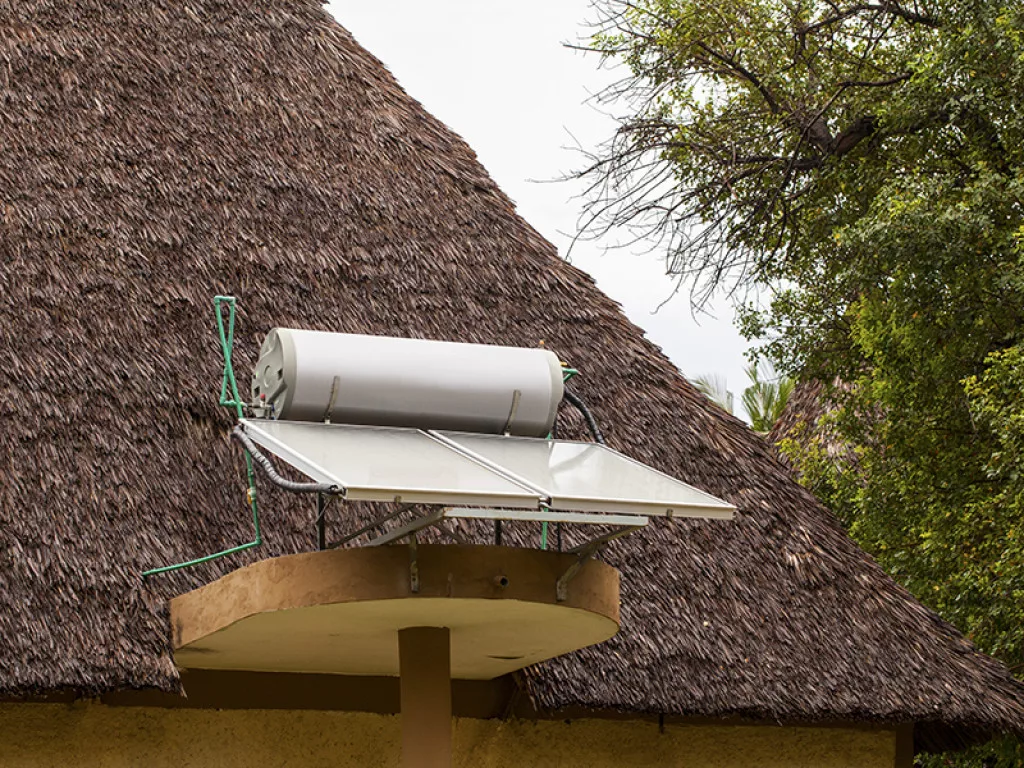
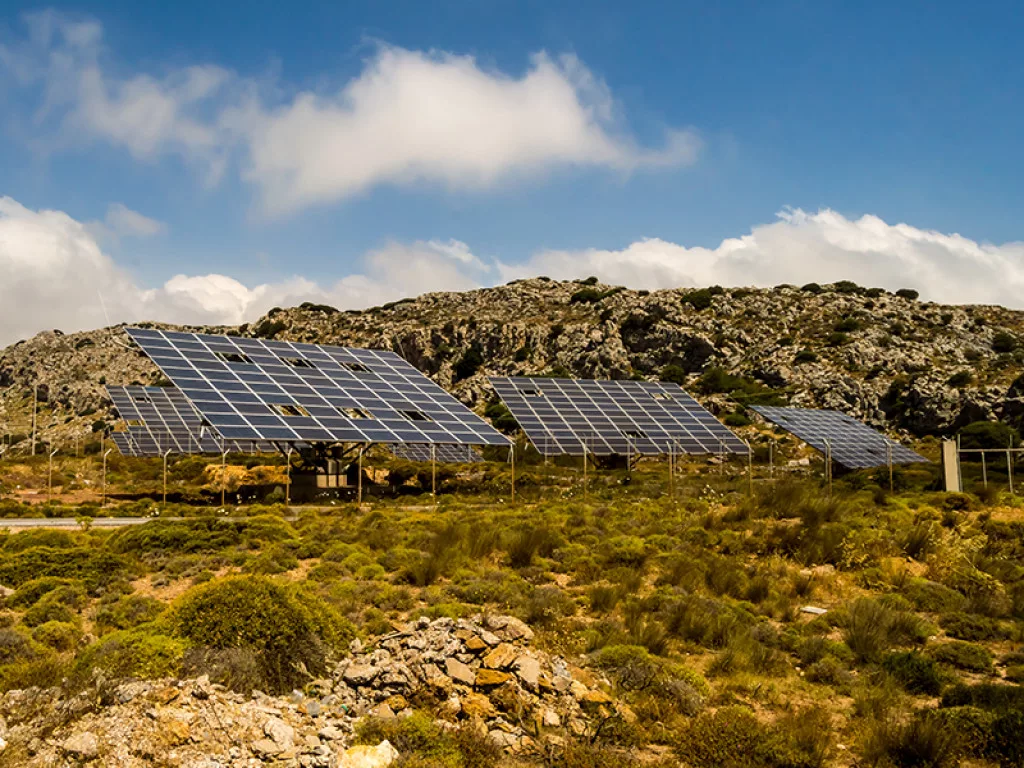
Q&A WITH ANDREW AMADI, CEO, KENYA RENEWABLE ENERGY ASSOCIATION
Kenya has made great strides in the adoption of clean technologies and solutions, facilitated by the Kenya Renewable Energy Association. Andrew Amadi, CEO, tells us more.
An independent non-profit organisation formed in August 2002, the Kenya Renewable Energy Association (KEREA) is dedicated to the growth and development of renewables in Kenya. Promoting the interests of members of the renewable energy industry, we delve into the Association’s core activities and objectives with CEO, Andrew Amadi.
Can you talk us through the origins of KEREA, how it came about, and its initial vision?
Andrew Amadi, CEO (AA): KEREA was created from the Technical Committee that was developing standards for solar technologies in 2002. It was recognised that in addition to having standards, it was also helpful for peers to self-regulate the implementation of these standards. The initial vision was to create a conducive environment for the development, adoption and uptake of renewable energy technologies in Kenya.
Since inception, how has KEREA developed and progressed in terms of its key objectives and the messages it tries to get across?
AA: KEREA has been instrumental in the development of standards in the renewable energy sector, which has been accompanied by the development of enabling regulations for the growth of the sector. The key messaging has been the importance of renewables in the energy mix as well as climate mitigation efforts, and later on the economic advantages presented by renewable energy solutions.
What do you find most exciting about the renewable energy sector in Kenya?
AA: Kenya is a continental and global leader in renewable energy. 92 percent of the electricity generated on the grid in Kenya comes from renewable energy sources. Kenya is the largest market in Africa for off- grid solar products such as solar lanterns, solar home systems, and stand-alone solar solutions for productive use such as solar water irrigation pumping and solar powered mills. Kenya boasts the largest installed capacity in electricity generation from geothermal sources and the largest wind farm in Africa.
“KEREA has been instrumental in the development of standards in the renewable energy sector”
Andrew Amadi, CEO, KEREA
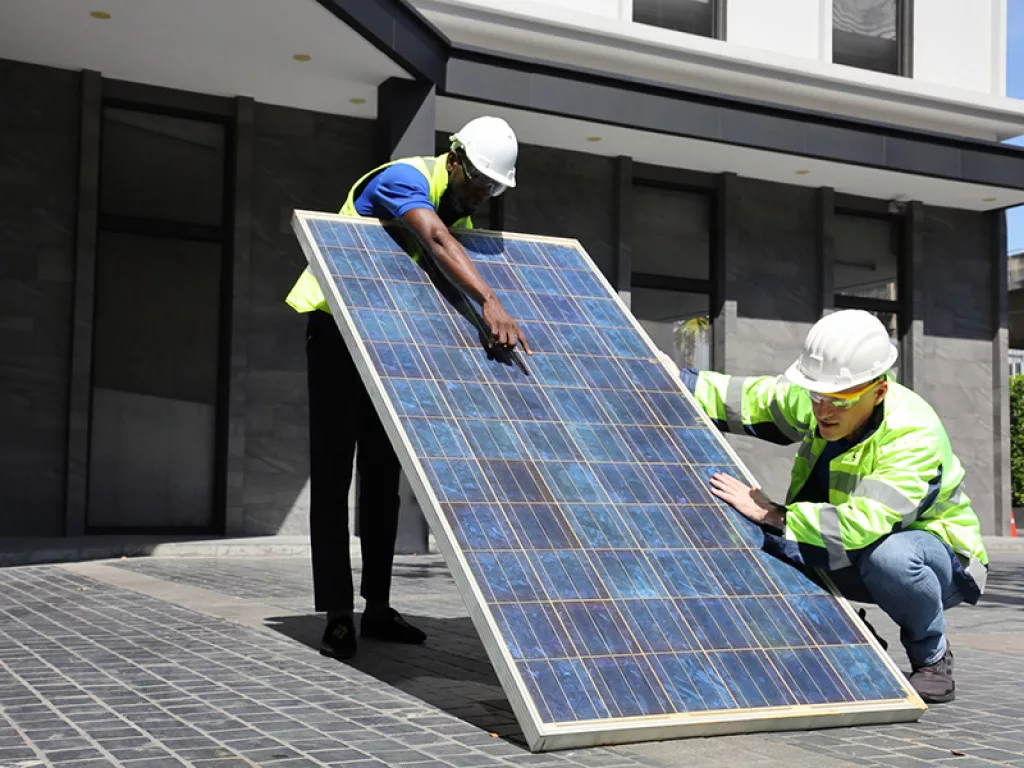
On the flip side, what are its biggest challenges?
AA: Unsustainable biomass remains the biggest challenge in the transition to renewable energy, mostly from wood fuel, which constitutes over 60 percent of the primary energy consumed. There is also the challenge of an unpredictable tax environment for renewable energy, whereby exemptions have been withdrawn or their implementation impeded by unfavourable and sometimes unfair interpretations of the exemption criteria. While there have been significant investments made at a national level, consumer financing and project financing still face significant barriers.
What trends are currently transforming the sector in your region? How are you responding to them?
AA: The global reduction in the cost of solar panels has significantly increased interest in solutions, even though financing is still a challenge. There has been an increase in the understanding of the sector and opposition towards the development of coal and nuclear-powered projects from the general public.
The sector has experienced significant growth in the uptake of solar home systems, which now constitute approximately 25 percent of connectivity, ever since Tier 2 solar home systems were added to the national electrification strategy in 2018.
The sector has recognised the decline in demand for solar home systems and is now positioning for the productive use of renewable energy and more emphasis of the economic advantages over the environmental benefits. Also, as a result of being one of the largest off-grid solar product markets in the world, there is now an increase in the generation of electronic waste from off-grid solar products.
An initiative called the Kenya Solar Waste Collective has brought together sector players to start joint initiatives to manage electronic waste. A joint situational analysis and strategy has been prepared in collaboration with the Energy Private Developers association in Rwanda.
The Kenya Solar Waste Collective has also made plans for setting up a producer responsibility organisation (PRO), ahead of the pending Producer Responsibility Regulations. Players from manufacturing and telecommunications have also joined the initiative to create a PRO that will manage all electronic waste in the country.
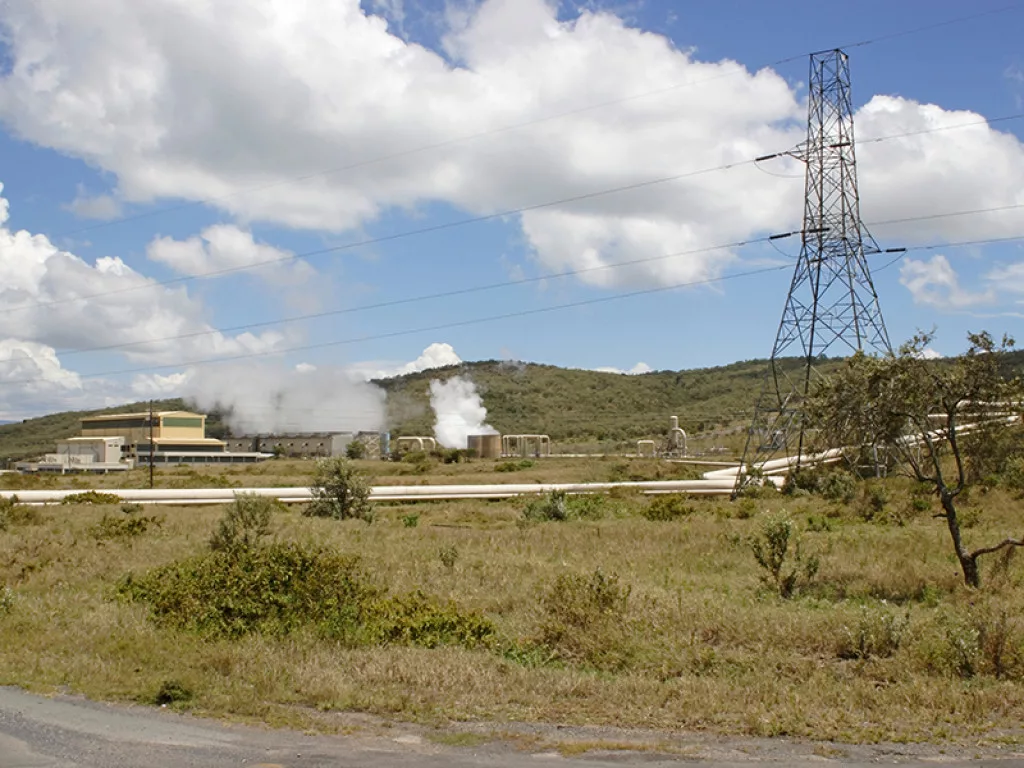
Have you got any projects in the pipeline you wish to highlight?
AA: KEREA has partnered with the Association for Electric Mobility Developers Africa to create a working group that will coordinate information and activities in the transition from internal combustion engine vehicles to electric vehicles (EVs), with the target to have five percent of new vehicles in the market to be EVs by the end of 2025.
KEREA has also created a working group to coordinate activities around creating an enabling environment to scale up the productive use of renewable energy solutions, targeting entire value chains with the inclusion of marginalised groups and designed within the circular economy.
KEREA is also piloting the aggregation of smaller rooftop solar solutions for small and medium enterprises, to make the ticket size big enough to attract investment while extending the benefits of economies of scale to the segment. This is being coordinated by the use of smart metering technologies and enhancing the technical and ethical skills of workers in the value chains.
How do you see KEREA developing as an association over the next five years?
AA: I see KEREA transitioning from operating essentially as a club for a small number of corporate companies to having a very wide and broad membership including any skilled worker in the renewable energy value chain.
I envisage KEREA becoming a primary knowledge provider on matters of renewable energy, as well as having more public engagements and breaking down renewable energy to the general population.
Finally, I see KEREA shifting from reliance on donor and development partner supported projects to having a crucial role in the market, and being sustained from value services to the private sector beyond advocacy.



